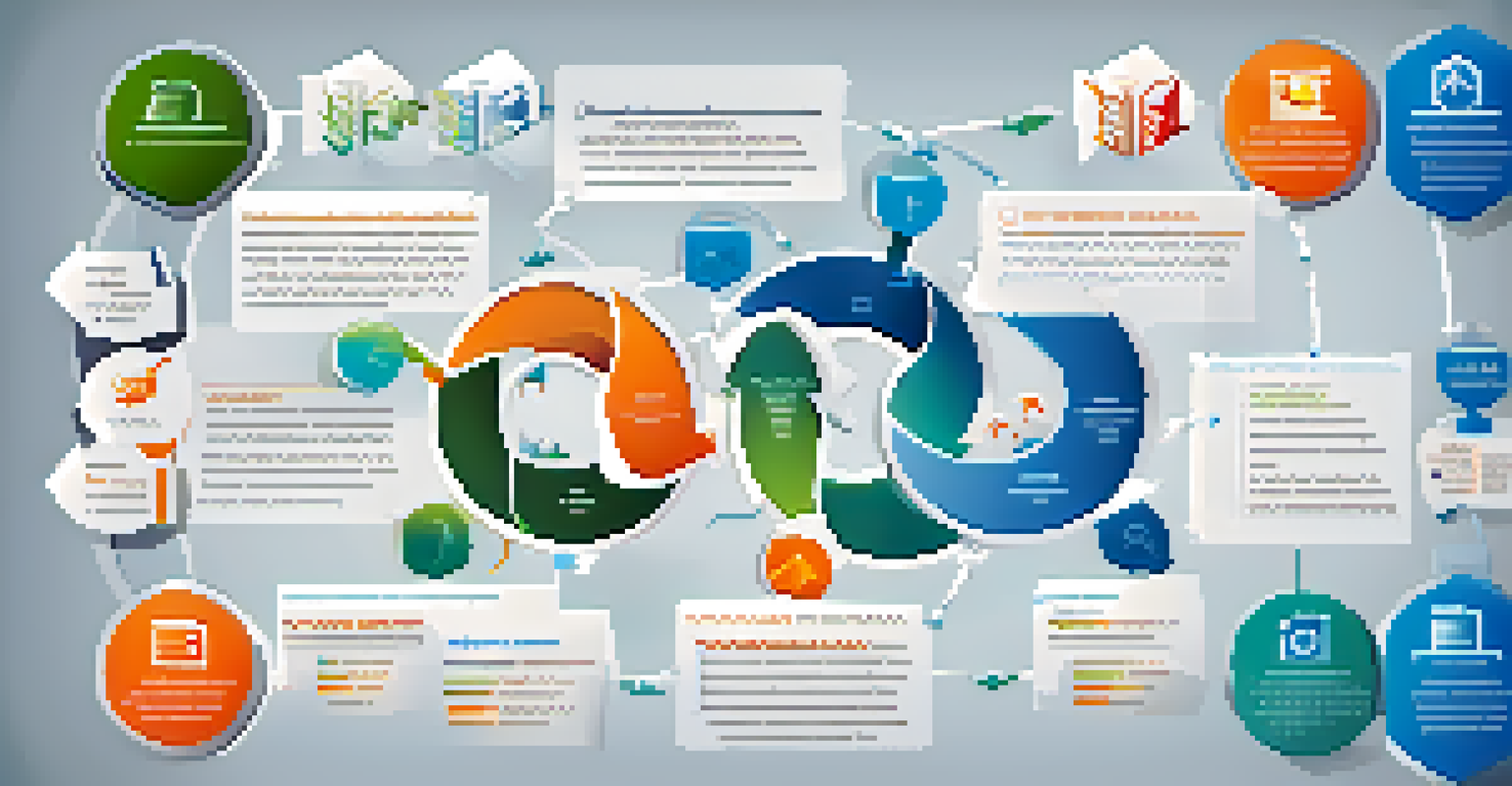Leveraging Data to Inform CPD Program Design and Delivery

Understanding Continuous Professional Development (CPD)
Continuous Professional Development, or CPD, is essential for professionals aiming to enhance their skills and stay updated in their fields. It encompasses various learning activities that help individuals improve their competencies, whether through workshops, online courses, or conferences. By engaging in CPD, professionals not only fulfill licensing requirements but also contribute to their personal and professional growth.
Continuous learning is the minimum requirement for success in any field.
The importance of CPD cannot be overstated. As industries evolve and new technologies emerge, the need for ongoing education becomes crucial. This ensures that professionals are equipped to meet changing demands and expectations in their roles. In fact, CPD fosters a culture of lifelong learning, which is vital in today’s fast-paced work environment.
However, to maximize the effectiveness of CPD programs, it's essential to tailor them to the specific needs of the target audience. This is where leveraging data comes into play, allowing organizations to design programs that truly resonate with participants and address their learning gaps.
The Role of Data in CPD Program Design
Data serves as a powerful tool in the design phase of CPD programs. By analyzing feedback from previous sessions, organizations can identify what worked well and what didn’t. This allows them to make informed decisions when developing new content or formats, ultimately enhancing participant engagement and satisfaction.

Additionally, data from surveys and assessments can highlight common skill gaps within a profession. For instance, if many professionals report struggling with a specific software, CPD providers can create targeted training sessions to address this challenge. This not only meets the immediate needs of the audience but also increases the perceived value of the program.
CPD Enhances Professional Growth
Continuous Professional Development (CPD) is crucial for professionals to enhance their skills and keep pace with industry changes.
Moreover, leveraging demographic data helps in personalizing the learning experience. Understanding the backgrounds, experience levels, and learning preferences of participants allows organizations to create more relevant and effective CPD offerings.
Collecting Relevant Data for CPD Programs
To effectively leverage data, organizations must first establish methods for collecting it. This can include pre- and post-program surveys, focus groups, and participant interviews. By gathering diverse perspectives, organizations can gain a comprehensive understanding of the learning environment and the needs of their audience.
Data is the new oil, and the ability to analyze and interpret data is the key to success in the modern economy.
In addition to qualitative data, quantitative metrics such as attendance rates and completion rates can provide valuable insights. Tracking these figures helps determine the popularity of certain topics or formats, enabling organizations to refine their offerings over time. For example, if a workshop on digital marketing consistently attracts a large audience, it may be worth expanding that topic into a series.
Lastly, organizations should consider utilizing technology for data collection. Learning Management Systems (LMS) often have built-in analytics tools that can track user engagement and performance, making it easier to collect and analyze relevant data.
Analyzing Data to Drive CPD Improvements
Once data is collected, the next step is analysis. This involves examining the information to identify trends, patterns, and areas for improvement. For instance, if many participants report that a particular course was too rushed, it may be a sign that the pacing needs adjustment.
Data analysis can also help organizations to set benchmarks and measure success. By comparing current program outcomes to historical data, providers can assess whether their CPD initiatives are meeting objectives. This ongoing evaluation process is key to maintaining high-quality programming.
Data Guides CPD Program Design
Leveraging data allows organizations to tailor CPD programs to meet specific audience needs and address skill gaps effectively.
Moreover, organizations can use data to segment their audience and tailor offerings accordingly. By understanding the unique needs of different groups, CPD providers can create more targeted programs that resonate with specific audiences, ultimately leading to higher satisfaction and engagement.
Implementing Data-Driven Changes in CPD Delivery
With insights gained from data analysis, it’s time to implement changes in CPD delivery. This could mean adjusting the content, format, or even the mode of delivery—shifting from in-person to online or hybrid options, for example. Flexibility is key, as it allows organizations to adapt to the preferences of their audience.
Engaging participants through interactive and practical learning experiences can significantly enhance retention and application of knowledge. For example, incorporating case studies or real-world examples into workshops can make the content more relatable and applicable to professionals’ daily roles.
Additionally, organizations should continuously solicit feedback after implementing changes. This creates a cycle of improvement, where data is used not only to inform initial design but also to refine and enhance CPD offerings over time.
The Importance of Continuous Feedback Loops
Establishing continuous feedback loops is fundamental to the ongoing success of CPD programs. Regularly gathering participant feedback allows organizations to stay attuned to the needs and preferences of their audience. It’s a proactive approach that ensures programs remain relevant and effective.
Feedback can come in various forms, from quick surveys to in-depth interviews. By creating an open channel for communication, organizations encourage participants to share their thoughts and experiences, which can lead to valuable insights. This also fosters a sense of community and partnership between the provider and the participants.
Feedback Fuels CPD Improvement
Establishing continuous feedback loops ensures CPD programs remain relevant and allows for ongoing enhancements based on participant insights.
Moreover, using feedback to make iterative improvements can enhance participant satisfaction and outcomes. When professionals see that their input leads to tangible changes, they are more likely to engage with future offerings, creating a positive cycle of participation.
Future Trends in Data-Driven CPD Programs
As technology continues to evolve, so too will the ways in which data is leveraged in CPD programs. Emerging technologies, such as artificial intelligence and machine learning, are set to transform how organizations analyze and utilize data. These advancements can provide deeper insights into learning behaviors and preferences, allowing for even more personalized learning experiences.
Additionally, the rise of online learning platforms has made it easier to collect and analyze data at scale. Organizations can track user engagement and performance across a wide range of courses, enabling them to refine their offerings based on real-time data.

Looking ahead, the integration of data analytics into CPD will likely become even more critical. As professionals increasingly seek flexible and relevant learning opportunities, data-driven insights will play a key role in shaping the future of CPD programs.